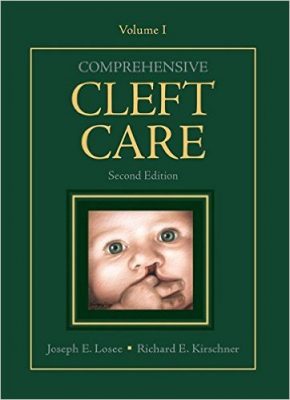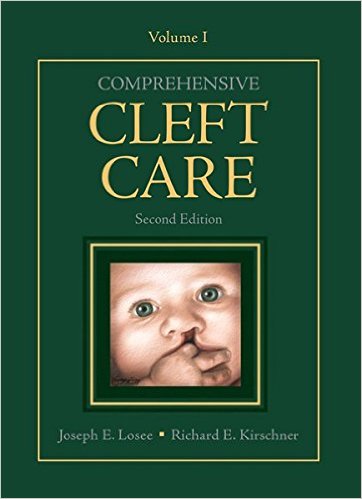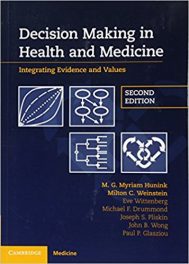 Editors: Joseph E. Losee, MD and Richard E. Kirschner, MD
Editors: Joseph E. Losee, MD and Richard E. Kirschner, MD
Publisher: Thieme – 728 pages, plus index and appendices
Book Review by: Nano Khilnani
A cleft lip is an opening in the upper lip that may extend into the nose, and a cleft palate is when the roof of the mouth contains an opening into the nose. They are also called orofacial clefts. Sometimes both of these conditions are found in a single child. Cleft lip and palate occurs in about two percent of births in the developed world, according to a Wikipedia article. Cleft lip is about twice as common in males than females, while cleft palate without cleft lip is more common in females.
These conditions happen as a result of tissues not joining properly during fetal development. They are essentially birth defects, and are corrected with surgery. Their exact causes have not been determined, but the risk factors have been associated with: smoking during pregnancy, diabetes, an older mother, and certain medications, such as some used to treat seizures.
The good news is that the number of babies born with cleft lip and cleft palate has been declining. A study found that in 1990, about 7,600 people were born with these conditions, but by 2013, the number had declined to less than half, at 3,300.
This second edition of Comprehensive Cleft Care, one of the most authoritative texts on cleft lip and palate surgery and treatment available, continues to provide a broad and deep examination of factors surrounding the understanding, diagnosis, and management of these birth defects.
It represents the combined work of 141 specialists in plastic surgery and related fields, from all over the United States and 11 other countries – Australia, Canada, China, France, Hong Kong, Norway, Singapore, Sweden, Switzerland, Taiwan, and the United Kingdom. They authored the 75 chapters in this volume.
The writers are primarily physicians and pediatric plastic and reconstructive surgeons, with a number of them being craniofacial or oral and maxillofacial surgeons. Others practice and/or teach cariology, cleft lip and palate surgery, dentistry, orthodontics, prosthodontics, otolaryngology or head and neck surgery, pediatrics, psychology, and other medical specialties.
This review is of Volume I, which focuses on the non-surgical aspects of cleft treatment and care. Volume II is on the surgical aspects.
The chapters in this volume are organized around seven Parts, which we list below to give you an overview of the contents:
- Part I – Fundamentals
- Part II – Embryology, Anatomy, Classification, Epidemiology, and Genetics
- Part III – Nursing and Primary Care
- Part IV – Neuro-psychosocial and Educational Aspects
- Part V – Cleft Palate Speech and Velopharyngeal Dysfunction
- Otologic, Audiologic, and Airway Assessment and Management
- Outcomes and Research
As a purchaser of this print edition you can access the E-book version and other valuable resources. Go to https://online.vitalsource.com/user/new, then:
- Create your VitalSource Bookshelf account or log on to it if you already have an account.
- Redeem the code by scratching off the grey film on the inside front cover of this book
You can download the E-book version of this book on your PC or Mac, iPhone, iPad Touch, or iPad, Android, smart phone, tablet, or on your Kindle Fire. If you have any questions on downloading, please visit: http://support.vitalsource.com/
The range of topics and subtopics covered in this book of over 700 pages is very wide indeed.
You can begin with learning the fundamentals in Part I. Here, you can go to the chapters entitled Fundamentals of Team Care; Clinical Outcomes Research and Evidence-Based Practice; Advocacy and Cleft Care; and Global Aspects of Cleft Care.
In Part II, you can familiarize yourself with the information found in these chapters: Embryology of Orofacial Clefting; Anatomy of Cleft Lip and Palate; Classification of Orofacial Clefts; Epidemiology of Cleft Lip and Palate; Prenatal Diagnosis of Facial Clefting; Genetic and Epigenetic Perspectives of Orofacial Clefting; Genetics of Nonsyndromic Orofacial Clefting; Syndromes of Orofacial Clefting; and 22q11.2 Deletion Syndrome.
Nursing and Primary Care being the title of Part III, you can avail of Prenatal and Genetic Counseling; learn about Feeding and Swallowing in Children With Cleft and Cranofacial Anomalies; read about Nursing Care of the Child With Cleft Lip and Palate; and figure out how to go about the Assessment and Management of Children With Cleft Lip and Palate.
Kids with cleft lip and cleft palate have issues when they are with others, so Part IV is helpful in this area, with chapters such as these: Neuropsychological and Neuroimaging Aspects of Cleft Lip and Palate; Psychosocial and Behavioral Aspects of Orofacial Clefting; The Power of Difference: Social and Cultural Issues Associated With Clefts and Cranofacial Conditions; Educating the Child With Cleft Lip and Palate; The Role of Social Work in Cleft Care; Understanding Quality of Life; and Understanding the Burden of Care.
Correct speech and pronunciation is often a challenge for people with cleft lip and cleft palate. The chapters found in Part V are helpful in overcoming these challenges: Anatomy and Physiology of the Velopharynx; Communication Disorders Associate With Cleft Palate; Timing of Palatoplasty and Speech; Assessment of Velopharyngeal Function; Instrumental Measures of Velopharyngeal Function; Speech Therapy for Children With Cleft Palate; and Noncleft Velopharyngeal Disorders.
Hearing and breathing also affects people with cleft lip and cleft palate, so in Part Vi, these issues are covered in four chapters: Hearing Disorders and Middle-Ear Disease in Patients With Clefts; Audiologic Assessment and Management of Children With Cleft Palate; Pierre Robin Sequence: Assessment and Nonsurgical Management; and Sleep-Disordered Breathing.
Finally, read about the successes and failures of surgery and postoperative care in working with children and adults who have cleft left and cleft palate, in Part VII, by going through these three chapters: Assessment of Orthodontic Outcomes in Patients With Clefts; Speech: Perceptual and Functional Outcomes; and Assessment of Cleft Lip and Nose Repair Outcomes.
Editors:
Joseph E. Losee, MD, FACS, FAAP is Ross E. Musgrave Professor of Pediatric Plastic Surgery, Executive Vice -Chair and Program Director in the Department of Plastic Surgery at the University of Pittsburgh Medical Center; and Division Chief of Pediatric Plastic Surgery at The Children’s Hospital of Pittsburgh in Pittsburgh, Pennsylvania.
Richard E. Kirschner, MD, FACS, FAAP is Robert F. and Edgar T. Wolfe Foundation Endowed Chair in Plastic and Reconstructive Surgery; Chief of the Section of Plastic and Reconstructive Surgery; Director of the Cleft Lip and Palate Center in the Department of Reconstructive Surgery at Nationwide Children’s Hospital; Professor of Surgery and Pediatrics; and Senior Vice-Chair of the Department of Plastic Surgery at Ohio State University College of Medicine in Columbus, Ohio.







